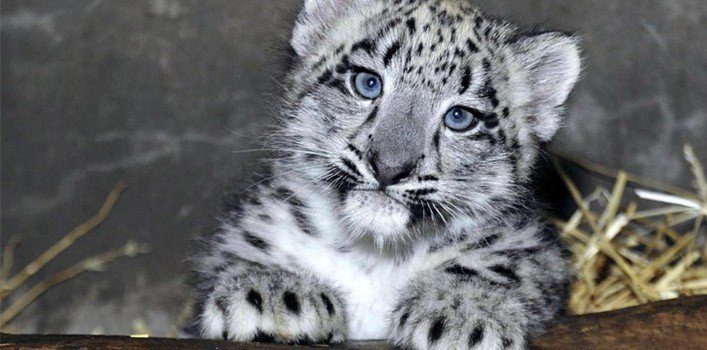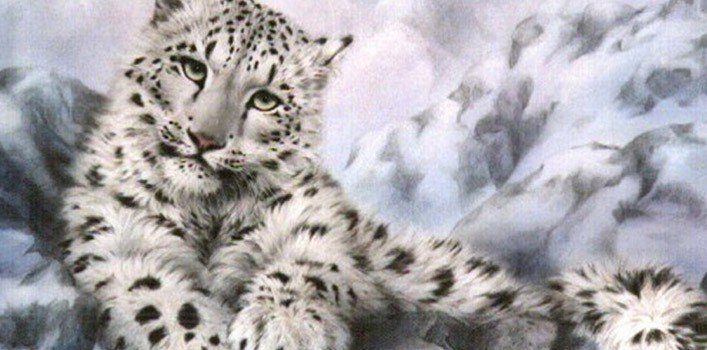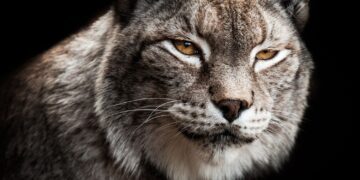Snow leopards may be considered among the one of most beautiful creatures on this planet, but they’re also an interesting and special member of the cat family. Check out the facts below!
Why are snow leopards so different?
Snow leopards are unique and have many factors that separate them from the other big cats in the world.
For starters, snow leopards are unusual in the way that their body is constructed and in the way it functions.
Snow leopards’ feet are much wider and covered in more fur providing the cat with a set of paws that act as “Snowshoes” in the cold and often snowy climate in which they live.
A snow leopard’s tail and nose are also different and both are also a result of their chilled habitat.
The nose of the leopard is short, but has a wide nasal cavity that causes the air to be warmed before reaching the cat’s lungs.
Even the snow leopard’s tail helps it through the cold climate.
Its tail is approximately three feet long and thick with fur. They use it to wrap around their body and face when resting in the freezing temperatures of the harsh, snowy, rugged alpine regions in Central Asia where they live.
Here is where the snow leopard becomes unusual – unlike lions and tigers, the snow leopard cannot roar.
his is due to their underdeveloped vocal cords. They also eat an unusual amount of vegetation, such as grass or twigs.
Scientists are unsure whether this helps with digestion or if this is a dietary requirement for the cats to receive essential vitamins or rid themselves of parasites.
Other than vegetation, these leopards usually prey upon wild sheep or goats.
Not after dusk or dawn.
These leopards are even active at an unusual time.
Snow leopards aren’t always nocturnal, but they are rarely seen during the day either.
They’re mostly active during dawn and dusk making them cats of a “crepuscular activity pattern” as named by scientists.
No need to fear the snow leopard.

As far as behavior goes, these cats are very shy, passive aggressive mammals.
hey will most likely flee the scene if disturbed while feeding or resting and there has never been a verified attack on a human by a snow leopard.
The only thing that might cause snow leopards to become aggressive is by threatening their cubs – which is not recommended!
They’re mostly elusive and solitary mammals, but their behavior can vary depending on the amount of human presence near their habitat.
Since these animals are so shy and elusive, it can be difficult for them to be studied. The nature of these creatures has given them the title, “Ghosts of the Mountains“.
It also does not help that the snow leopard population is only at approximately six thousand and dropping due to loss of habitat and poaching. A lot of the habitat loss is due to climate change.
The real threat?
Even though poaching can be stopped by arresting the individuals that do it, it is still difficult to keep people in Asia from harming and killing them, because the leopards prey after livestock that the people need for food and money.
Beautiful, unique, and odd creatures of the wild we can only hope to catch glimpses of for scientific study.
Hopefully their numbers will grow again soon so that we can learn more fascinating facts about these “cool” cats.

















